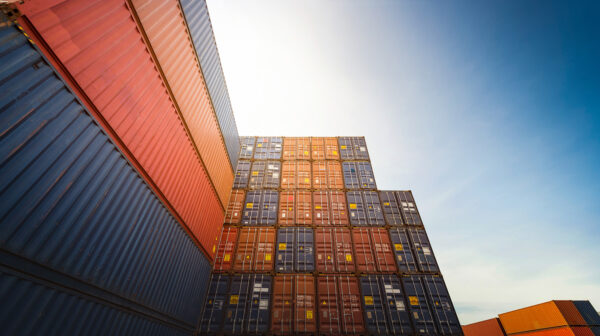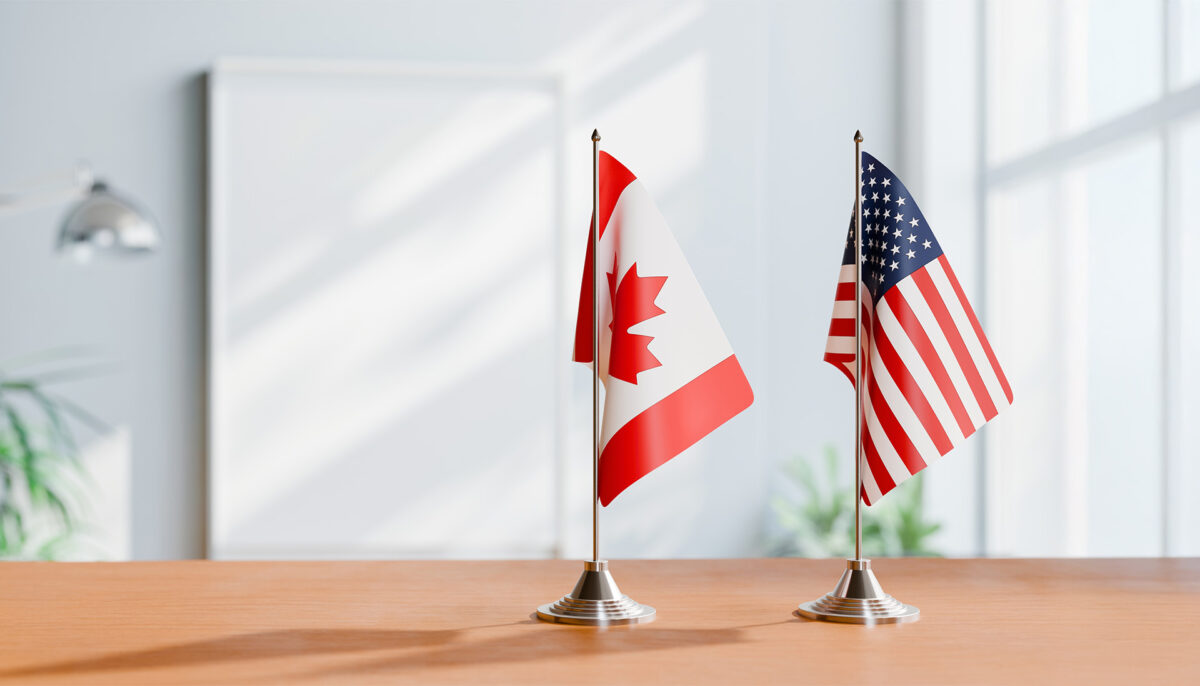The trade playbook is changing – again. As the United States doubles down on tariff-based policy under the Trump administration, Canadian businesses are facing more than just higher duties: they’re confronting a fundamental shift in how cross-border commerce is taxed, regulated, and enforced. For companies that import, export, or manufacture goods across North America, the stakes are strategic.
This article draws on insights shared at Miller Thomson’s “Navigating Tariffs: A Canadian Global Perspective” conference in Vancouver, where legal, tax, and trade professionals – including guest speaker Gordon McGuinty, Director of Transfer Pricing at PwC – discussed how to make sense of the current tariff environment and how businesses can prepare for what’s next.
Let’s break down what’s changed – and what your business can do now.
Understanding the shifting U.S. trade policy
The Trump administration has revived its “America First” trade agenda, invoking longstanding U.S. statutes such as the International Emergency Economic Powers Act (the “IEEPA”), section 232 of the Trade Expansion Act (national security), and section 301 of the Trade Act of 1974 (unfair trade practices) to impose sweeping tariffs. Today, duties range from 10% to 50% on goods from all trading partners, allies and adversaries alike.
If that sounds familiar, it should. But the rules of engagement have evolved. One major shift is the rollback of the USD $800 deminimis exemption, which previously allowed small-value shipments into the U.S. duty-free. While initially targeting China and Hong Kong, this rollback signals broader scrutiny of e-commerce and consumer goods.
Adding to the complexity, many Canadian manufacturers assumed their products met CUSMA (formerly NAFTA) requirements but failed to properly certify them. In today’s enforcement climate, that mistake is costly.
What’s more, the U.S. Department of Justice has explicitly committed to using the False Claims Act to pursue customs violations. Whistleblowers, including competitors, can report companies for misclassification or misrepresentation, triggering fines, audits, or litigation. Notably, this statute incentivizes whistleblowing: it allows private citizens to file qui tam suits against those who have allegedly defrauded the U.S. government and, if successful, they may receive a portion of the government’s recovery.
Challenges to presidential power
Complaints about the tariffs have been filed with the U.S. Court of International Trade (the “CIT”) by a nonpartisan Liberty Justice Center campaign group, on behalf of small U.S. businesses, as well as by several states, including Oregon, Arizona, and New York. On May 28, 2025, the court ruled unanimously that the President’s use of the IEEPA to justify the so-called “Liberation Day” worldwide tariffs – announced on April 2, 2025 – and the country-specific tariffs imposed on imports from Mexico, Canada, and China was contrary to law.
The CIT was silent on whether IEEPA tariffs collected to date should be refunded to importers, but it did order the President to take steps to remove the tariffs. Instead, he has taken steps to appeal the order. The U.S. Court of Appeals for the Federal Circuit (the “CAFC”) has temporarily stayed the order while it reviews the motion papers.
Currently, U.S. Customs and Border Protection continues to collect the IEEPA tariffs. Unless both the CAFC and the Supreme Court of the United States agree to fast-track the appeal process, Canadian manufacturers and exporters – and their U.S. customers – face a prolonged period of uncertainty.
Canada’s response and key takeaways for businesses
Canada has not remained passive. In response, the government launched a targeted countermeasure strategy, including a $60 billion surtax list aimed at politically sensitive U.S. states and industries. However, the more impactful move has come from within.
The April 2025 Order in Council (the “Order”) introduced blanket remission from the retaliatory surtax for U.S.-origin goods imported into Canada by or on behalf of public health, public safety, and national security organizations and agencies. The Canada Border Services Agency (the “CBSA”) subsequently issued a Customs Notice providing guidance on the scope of this remission. According to the notice, the CBSA interprets the Order narrowly, excluding goods that do not serve public health, public safety, or national security purposes. The Order also provides remission for U.S.-origin goods imported into Canada for use in manufacturing, processing in Canada (in any manufacturing sector), or packaging of a food product or beverage in Canada. The CBSA’s Customs Notice clarifies that remission is available whether the end product of the manufacturing, processing, or packaging is intended for domestic consumption or export.
For importers outside those categories, importer-specific remissions are still available – but they must demonstrate hardship and economic risk.
Examples from the field:
- An aluminum importer won remission by demonstrating a lack of domestic alternatives and the risk of layoffs.
- Cheese producers using imported dairy inputs have secured relief through Canada’s Exporter Products Program.
Tariff classification: A strategic but risky tool
Could you reclassify your product to reduce duties? Maybe – but proceed with caution. While some goods fall into “grey zones” under the Harmonized System, pushing the envelope without an advance ruling from customs authorities could result in penalties or even a fraud investigation.
Supply chain readiness: From dirt to delivery
Origin now matters more than ever. Tariff compliance requires precise documentation of where and how your goods are made. It’s no longer enough to know who assembled the final product – you need to know where the steel was poured, where the ingredients were grown, and where the components were sourced.
Smart companies are now conducting:
- gap analyses to compare current procedures with regulatory expectations;
- scenario planning and sensitivity modelling
- supplier documentation audits to ensure compliance across the supply chain; and
- origin reviews to determine (or reconfirm) CUSMA-eligibility.
Many are also creating internal “war rooms” – multidisciplinary teams responsible for:
- contract renegotiation;
- CUSMA certification reviews; and
- customs declaration verification.
Government relief and incentive programs
In addition to relief and drawback mechanisms, Canadian businesses can access a range of government incentive programs aimed at minimizing tariff exposure and supporting long-term competitiveness. Programs such as the Duties Relief Program allow qualifying companies to import goods without paying duties, provided those goods are later exported or used in manufacturing for export.
Provincial and federal governments have also begun rolling out funding initiatives to support:
- supply chain diversification;
- nearshoring or reshoring investments;
- manufacturing process modernization; and
- upgrades to trade compliance systems.
Staying informed about these evolving opportunities and documenting your company’s trade exposure is key to accessing financial support. These programs not only relieve pressure but can also help future-proof your cross-border operations.
To complement these efforts, Canadian importers can access a variety of additional government programs:
- general duty remission for specific sectors;
- importer-specific remission for exceptional hardship; and
- duty drawback when re-exporting goods.
Tip: These programs reward preparedness. Keep detailed records and proactively map your eligibility.
Tax and regulatory considerations
These trade measures also carry direct and indirect tax, as well as regulatory, implications. Tariffs form part of the dutiable value for imported goods, which increases the GST payable. Businesses must reassess their customs bonds and ensure they maintain their “release prior to payment” privileges. A sudden tariff spike can jeopardize these privileges if bond coverage is insufficient.
Key income tax considerations in tariff planning include:
- If you operate through a controlled U.S. subsidiary, income earned by that subsidiary will be attributed to the Canadian shareholder under Canada’s Foreign Accrual Property Income (“FAPI”) rules, and the shareholders will be subject to tax at high rates. Careful tax planning is necessary to avoid the application of those onerous rules and to prevent an additional tax burden.
- Domestic tax rates and access to favourable tax treatment may be impacted by changes to supply chains or business operations made in response to tariffs. Canadian companies should not assume that existing tax benefits – such as the small business deduction or qualified small business corporation (“QSBC”) share status – will continue to apply without considering how shifts in business location, asset use, or income sources may impact eligibility.
- If you bundle royalties, freight, or insurance into your declared import price, you may be overpaying. These costs should be separated using distinct agreements (e.g., license and warranty agreements) and charged separately. In certain cases, these services and the licensing of intellectual property rights to the U.S. customer should be undertaken by a Canadian affiliate that is separate from the Canadian seller of the product.
- Transfer pricing is important for any intercompany transactions where the values used in those transactions are necessary to support the value declared for customs purposes. If the transactions are also between a U.S. subsidiary and a Canadian resident, Canadian income tax transfer pricing rules should be taken into account.
One underused planning strategy is the United States’ “first sale rule,” which allows importers to base duty on the price paid by the first buyer in the supply chain – rather than the final buyer – provided key requirements are met. When combined with other strategies, this rule can result in a lower value of the good for the purposes of the calculation of duty, but expert guidance is necessary due to its complexity. Insufficient documentation, inability to prove the bona fides of the sale structure, and related-party pricing considerations can trigger duty reassessments and penalties.
Adapting for the long term: Strategic business adjustments
Looking ahead, medium- and long-term adjustments may prove essential. Some companies are rethinking their cross-border models entirely:
- Toll/contract manufacturing in the U.S. allows Canadian firms to maintain market access where raw materials are sourced in the U.S. and finished goods inventory is maintained there. Opportunities also exist for Canadian companies to act as toll or contract manufactures, enabling access to the Canadian market and to foreign markets that have raised tariff barriers for goods originating in the United States.
- FTA arbitrage is emerging as a strategy: Canada’s 60+ trade agreements position it as a hub for low-duty transformation and re-export.
- Some Canadian business are forming joint ventures with U.S. companies.
- The acquisition of U.S. companies enables Canadian firms to gain access to U.S. markets and supply chains for servicing U.S. markets.
- Other companies are establishing operations in the United States.
Force majeure: A limited shield
Relying on a force majeure clause to escape tariff-driven cost increases? Think again. Canadian courts interpret these clauses narrowly, and rising costs rarely qualify.
A better approach is open renegotiation. Companies are encouraged to adopt a strategy of transparency and proactive renegotiation. Align with suppliers and customers as soon as possible. If necessary, adjust pricing, delivery terms, or sourcing – and document the reasoning thoroughly. Each fee should be evaluated to determine whether it contributes to the dutiable value.
International and diplomatic perspectives
These domestic strategies are shaped by broader geopolitical trends. The U.S. has cited four main justifications for its recent tariff policies:
- combatting the opioid crisis (IEEPA-fentanyl tariffs);
- re-shoring manufacturing;
- addressing trade imbalances; and
- protecting national industries (section 232 tariffs).
Some of these justifications are symbolic, others reactive – and most are politically charged.
Meanwhile, retaliatory tariffs from China and the EU, combined with new WTO data, signal that global protectionism is rising rather than receding. Although Canada’s trade relationships remain strong, companies should not assume continued stability under the status quo.
What business leaders should do next
Repeated tariff shocks have eroded international trust in the U.S. as a reliable trade partner. This may accelerate nearshoring, diversification, and strategic decoupling by Canadian businesses.
In light of this environment, we recommend the following top 10 actions for Canadian business leaders:
- Audit CUSMA certifications and educate suppliers.
- Map supply chains with full origin visibility.
- Join remission and drawback programs where eligible.
- Obtain advance rulings on classification and valuation.
- Form a customs compliance team across legal, tax, and operations.
- Update intercompany agreements and pricing models.
- Increase customs bond coverage in anticipation of tariff hikes.
- Review capital structure and affiliate taxation exposure.
- Monitor U.S. regulatory changes and trade actions closely.
- Engage with your industry association to influence policy.
Conclusion: Strategy over shock
Tariffs are no longer a temporary disruption – they are a permanent layer of risk in international trade. Canadian businesses that invest in legal clarity, supply chain transparency, and strategic tax planning won’t just survive this round of trade turbulence – they’ll come out ahead.
If your organization moves goods across the U.S. border, now is the time to reassess the structure, compliance, and resilience of your trade operations.
For legal or strategic guidance specific to your industry, we invite you to consult our Global Trade and Customs Group to help you maximize opportunities while ensuring continued compliance in this rapidly shifting environment.







